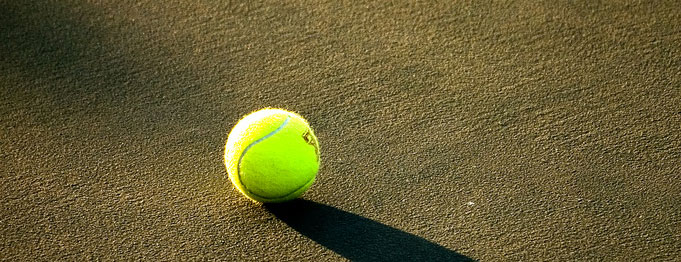More Tennis Science, As U.S. Open Nears Quarterfinals

Image rights: http://bit.ly/cGotEb
(Inside Science) -- Most of the quarterfinalists in the men's and women's singles are now set at the U.S. Open, in New York, N.Y. The athletes who win two more matches will meet in the finals and play seven matches over a maximum of 15 days, which could add up to tens of hours of highly intense tennis in a relatively short amount of time.
In two interviews with Doug Eng, a college tennis coach who also has a seat on the U.S. Tennis Association sports science committee, he explained how much tougher the game is today, and how much it's changed over the years.
As noted in my story from last week about the science and possible consequences of the unexpectedly popular technique of sliding on hard courts, the type of surface used at the U.S. Open --
Eng said there's been a noticeable increase in both how fast players are hitting the ball, and how much spin they apply to it. This makes it more difficult to return shots.
"Because the ball's moving faster and it sits up a little more than it used to, players are forced to move quicker to the positions on the court," said Eng. That change, he suspects, has encouraged players to resort to sliding, although he's not necessarily in favor of the practice.
Eng said much more, which I wanted to share as the Open reaches the final rounds.
In a grueling major tournament, he said, recovery between matches is critical to success. Watch for how long the fourth round and quarterfinal matches of Novak Djokovic and Andy Murray go on, because if both highly seeded players advance to face each other in the semifinals, the one who has exerted himself the least may have an advantage. The same holds true on the other half of the draw, which is led by Rafael Nadal.
Eng said modern players are taking better care of themselves than ever, but that the intensification of the game may be putting more stress on the body. "On the men's tour, the rallies have gotten longer. They're using more force, but also have to stay out there much longer. It's like not trying to hit one home run in a baseball game, now you have to hit six home runs," he said.
"A 16-year-old today might train as much in the gym as a 30-year-old tour veteran did in 1979, because the game has become more athletic," said Eng.
As an example of how intense the modern game is, Eng pointed to Marion Bartoli, who announced her retirement on August 14, at the age of 28, just weeks after winning Wimbledon, and after playing professionally since 2001. It's worth noting, however, that in the last week, Bartoli has made statements that suggest her retirement may be short
Novak Djokovic, set to play Marcel Granollers in his fourth round match, is a notable user of the slide technique. He said his ability comes from skiing as a boy. The highlights of his third-round match showcase one of his trademark slides (at about 0:36). [Editor's note: Link is no longer active.]

